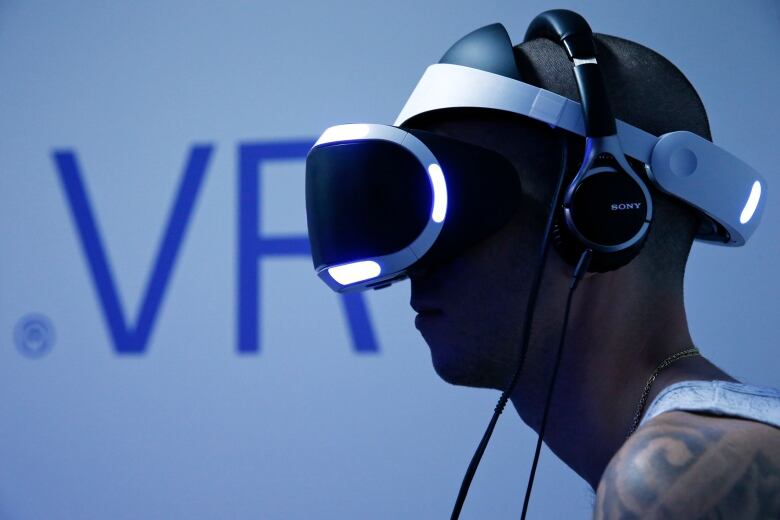Virtual reality: The difference between a $20 and $1,100 VR headset
How Google Cardboard, Samsung Gear VR, HTC Vive and Oculus Rift compare

At technology shows like this week's Mobile World Congress in Barcelona, there's a good chance an oddly shaped visor will be strapped to your head and pressed againstyour eyes in an effort to make your mouth drop wide open.
The virtual reality renaissance is already here. And for the budding VR industry, this year could mean the difference between winning or withering away.
Winning means convincing a lot of people not just to smile or gasp or laugh, but to walk away with a readiness to spend moneyperhaps hundreds of dollarsand bring that experience home.
Facebook, Google and Samsung are just a few of the big companies hoping to do that, at prices ranging from $20 to more than $800. But how do these experiences differ and are they worth the price?
GoogleCardboard
At around $20, Google Cardboardis VR at its cheapest and most practical: a piece of cardboard with some plastic lenses. Put an Android smartphone or iPhone inside, start up any number of Cardboard-ready apps and you're ready to go. (Almost anysmartphonewill domy two-year-old Nexus 5 handled it just fine.)

The VRSE app is one of the most impressive examples on Cardboard. It offers VR experiences like being at the 40th anniversary special of Saturday Night Live. Rather than paying attention to Will Ferrell as Alex Trebek, I found myself moving my head to take in the awkward smiles of the crowd during a dud or staring at the cue card holders.
Google's own Cardboard app has some neat offerings, including a "urban hike" through some of the world's most famous landmarks. It's not the same thing as physically being at the Eiffel Tower, but you can still look up in amazement.
In that sense, Google Cardboard is passive VR. You're mostly an observer, albeit with a larger field of vision than say, a movie. Being handheld, it's also not the most comfortable, which could affect your sense of immersion.
Samsung Gear VR
A $140 step up from Google Cardboard is Samsung's Gear VR. The concept is similar, with a smartphone and two lenses powering the virtual reality. The headgear is the key difference.

Built in collaboration with Oculus VR (a company owned and backed by Facebook), the Gear VR has straps to keep the device mounted to your face. Touch controls and buttons add a layer of interactivity. A curated store has a selection of movies, apps and games.
One of the unique examples was Dead Secret, a game that uses tense music and touch controls to help you investigate a murder-mystery.
For now, Gear VR only works with four models of Samsung smartphones (although it will soon work with the newly announced Samsung Galaxy S7 and S7 Edge). Like the Cardboard, it's also limited in the frame of reference it provides meaning you can look around, but you can't move around in the virtual space.
Oculus Rift,HTC Vive,Playstation VR
The VR experiences that do allow you to move around are a lot more immersive. From disarming a bomb to strolling on the deck of a sunken ship, these are being demonstrated around the world as the height of VR right now.

You'll find them in the Oculus Rift, HTC Vive and Sony's PlayStation VR the products of big money that translates into sharper, smoother moving imagery and better interactivity. These experiences involve more complex headsets, tracking equipment and advanced controllers all connected to a powerful computer or console.
One of the best examples to me was a surprisingly simple app on the HTC Vive. It's a Google program called Tilt Brush. I could draw in a 3D space and move through the stuff I had drawn, effectively dropping myself into a world I created. The immersion in apps like that can even make you forget the cord sticking out the back of your headset.
Promise vs. Price
For the consumer, that power comes at a price. Take the Oculus Rift: It's coming out at the end of March to customers who paid $600 US ($823) to pre-order it. The HTC Vive just announced pre-orders, starting at $800 US ($1,098). PlayStation VR is expected later this year.

With the Vive and Rift, there's also a less obvious cost. The computer that runs them has to be powerful. Recently, Oculus announced bundle pricing for a Rift and a computer that can reliably handle it. The lowest bundle was $1,500 US ($2,059).PlayStationVR will require a PS4, a $350+ purchase.
Those prices could keep a lot of people from dipping their toes in right away, but virtual reality doesn't need a critical mass at all levels this year. It needs more people trying out Gear VRs and Cardboards, leaving die-hards and early adopters to take the financial leap into Rifts and Vives. With that, this nascent industry may have a chance to grow and a skeptical audience may have time to be convinced.












_(720p).jpg)


 OFFICIAL HD MUSIC VIDEO.jpg)
.jpg)



























































































